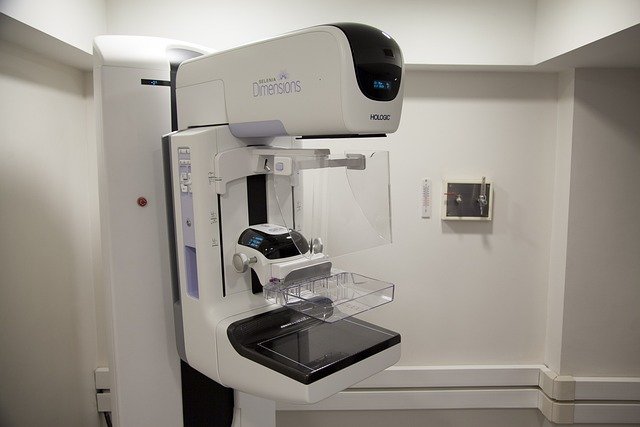Early Signs of Prostate Problems and Symptoms in Men United States 2025: What to Know
Many prostate problems begin with subtle urinary changes often overlooked by men. Early signs—difficulty urinating, frequent nighttime urination, weak urine flow, or blood in urine—warrant attention. This article explains symptoms and when US men should seek prompt medical advice for prostate health.

Understanding the Prostate and Its Role in Urination
The prostate is a small gland in men located below the bladder and in front of the rectum. It surrounds the urethra, the tube that carries urine and semen outside the body. The prostate’s primary role is to produce seminal fluid; however, as men age, the prostate often enlarges, which can affect urinary function. Understanding how prostate changes influence urination helps recognize early warning signs of prostate problems.
Difficulty Urinating: A Common Early Indicator
Difficulty in starting or maintaining urination, medically known as dysuria, is often among the first symptoms of prostate problems. As the prostate enlarges, it may compress the urethra, leading to:
- Hesitancy or delay in initiating urine flow
- Straining or pushing sensations to begin urinating
- A feeling of incomplete bladder emptying
These symptoms are commonly linked to benign prostatic hyperplasia (BPH), a non-cancerous enlargement of the prostate, but can also signal other conditions, including prostate cancer or infections.
Frequent Nighttime Urination (Nocturia) and Its Significance
Waking multiple times at night to urinate, termed nocturia, is a frequent complaint among men with prostate issues. An enlarged prostate can prevent the bladder from emptying fully during urination, resulting in more frequent urges to urinate, especially during the night.
- Waking more than twice per night consistently should be considered a warning sign.
- Nocturia can disrupt sleep quality and overall well-being.
Monitoring nocturia patterns can provide useful information for healthcare providers evaluating prostate health.
Weak or Interrupted Urine Flow: What It Suggests About Prostate Health
A healthy urinary stream is typically strong and continuous. When prostate enlargement or disease occurs, urine flow may become:
- Weak or slow
- Interrupted or split into multiple streams
- Dribbling towards the end of urination
These changes occur because the enlarged prostate narrows the urethral passage, restricting urine flow. Men should be aware of any gradual changes in flow strength or pattern and discuss them with their healthcare provider.
Blood in Urine or Semen: Serious Symptoms That Require Prompt Attention
The presence of blood in urine (hematuria) or semen (hematospermia) is less common but potentially serious. Even a single episode of blood should prompt a medical evaluation because it may indicate:
- Prostate inflammation or infection
- Prostate cancer
- Other urological conditions
Timely assessment reduces the risk of missing serious diseases that manifest early with these signs.
Pelvic or Lower Back Pain: When to Consider Prostate Problems
Persistent pain or discomfort in the pelvic area, lower back, hips, or upper thighs may sometimes be associated with prostate conditions. While many prostate issues, particularly early-stage ones, do not cause pain, its presence alongside urinary symptoms should lead to prompt medical consultation.
Common Prostate Conditions Causing These Symptoms
Benign Prostatic Hyperplasia (BPH)
- Non-cancerous prostate enlargement
- Very common in older men in the United States by 2025
- Causes urinary symptoms such as difficulty urinating, nocturia, and weak flow
Prostatitis (Prostate Inflammation)
- Includes acute and chronic bacterial infections and chronic pelvic pain syndrome
- Acute prostatitis may cause fever, chills, and burning urination, requiring urgent treatment
- Chronic forms may require longer-term management
Prostate Cancer
- Often develops silently with no early symptoms
- When advanced, may cause symptoms similar to BPH and prostatitis, including urinary difficulties and blood in urine or semen
- Screening and early detection remain important tools for management in men aged 55 to 69
Screening and Evaluation: How Prostate Problems Are Diagnosed
Men experiencing urinary symptoms should discuss prostate health screening with their healthcare provider. Standard diagnostic approaches include:
- Digital rectal examination (DRE) to physically assess prostate size and texture
- Prostate-specific antigen (PSA) blood test to detect elevated levels that may indicate enlargement or cancer
- Urine tests and imaging studies, such as ultrasound, for further evaluation
Screening recommendations emphasize informed decision-making between the patient and doctor, particularly for men between 55 and 69 years old.
Why Early Recognition Matters
Recognizing early prostate symptoms can lead to timely diagnoses and improved treatment outcomes. While many urinary issues can be managed effectively with medication or lifestyle changes, some may require more intensive therapies. Ignoring symptoms may lead to complications or progression of serious diseases, including cancer.
When to See a Healthcare Professional
Men should seek medical evaluation if they experience:
- Persistent difficulty urinating or inability to urinate
- Frequent nocturia disrupting sleep consistently
- Weak or interrupted urine stream
- Blood in urine or semen
- Pelvic or lower back pain with urinary symptoms
- Fever or chills alongside urinary difficulties, suggesting infection
Early professional consultation helps differentiate benign conditions from those needing specialized care.
Understanding early signs and symptoms of prostate problems enables men in the United States to protect their health actively in 2025. Tailored medical advice and attention to changes in urinary function are vital steps toward maintaining quality of life.
Sources
- National Institute on Aging. Prostate Problems. nia.nih.gov
- American Cancer Society. Signs and Symptoms of Prostate Cancer. cancer.org
This article is for informational purposes only and is not a substitute for professional medical advice. Readers should consult a qualified healthcare provider for personalized evaluation and treatment.




